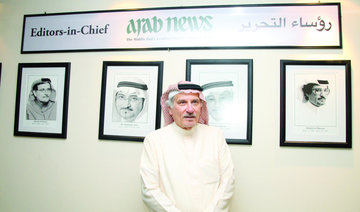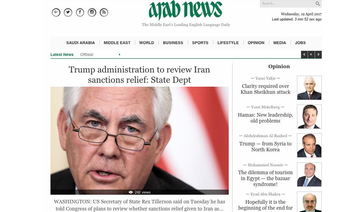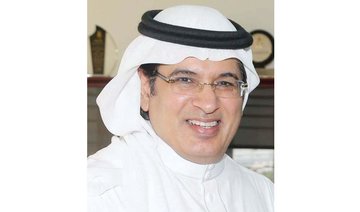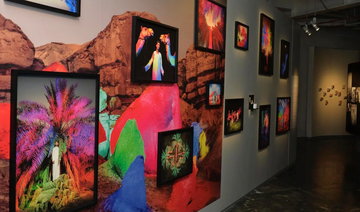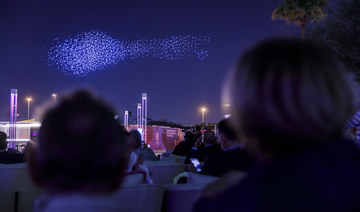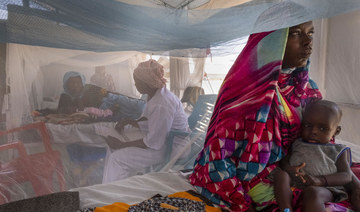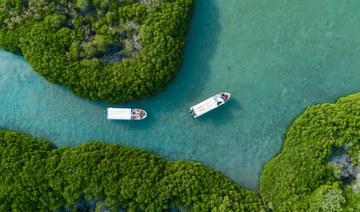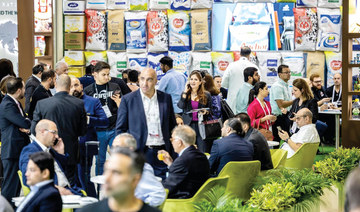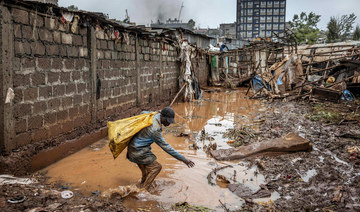Sixty-five-year-old Abdul Jabbar Hussain Dawood is the longest-serving member of Arab News staff. He joined the newspaper just two years after its launch in 1975.
“I joined Arab News on July 5, 1977,” he said. “The newspaper was located in those days in Jeddah’s Al-Sharafiya district.”
He was working for Pakistan’s leading English-language newspaper Dawn when he was tapped for a job at Arab News.
“Mohammed Ali was the general manager of the newspaper in those early days. He was a Pakistani national and came from Karachi. He was a confidant of the Hafiz brothers (Hisham and Muhammad Ali Hafiz) — the founders of Arab News — and did most of the hiring,” Abdul Jabbar said.
Abdul Jabbar was working at Dawn as an Intertype and Linotype machine operator. Back then, the world of printing revolved around these two automated typesetting machines.
“I learned how to operate the machines from my father and brother. It was my father, along with an Englishman, who were instrumental in setting the printing press for Dawn newspaper after Pakistan’s independence in 1947.”
One evening, while he was working in the Dawn office in Karachi in 1977, he got a call from Mohammed Ali, the general manager.
“He had heard of my operating skills from a common friend — Abdul Mateen Munshi, who later became a librarian at Arab News — so he straight away made me a job offer as a Linotype operator at Arab News in Jeddah,” Abdul Jabbar said.
When he landed in Jeddah, he joined a team of two senior operators, both fellow Pakistanis: Barkatullah and Mohammed Riyaz Sher.
“The newspaper was in a tabloid format and initially had eight pages. Within months it became 12 pages, then 16 and then 20,” Abdul Jabbar said.
“There was far too much work. The economy was booming. Oil was flowing and the country was flush with money. Advertisements were pouring in. Just as the economy was growing, the newspaper grew as well.”
“When I turned up at the office on the first day, Jihad Al-Khazen was the managing editor. A few days later, he left for London to prepare for the launch of our sister publication Asharq Al-Awsat.”
Abdul Jabbar said the newspaper was located in what was in fact a garage. “There was this two-story building, and next to it was a long hall-type structure in which the printing press was. There were two tiny rooms on top of the building in which some of us lived in those early days.”
Later, they were moved to a nearby flat that the company owned. “That flat and the building had no running water, no real electricity and no fan. We were very uncomfortable there,” he said with a wry smile.
He recalls the words of Abdul Hadi Bafaqeer, the printing press manager at the time, after he returned from a visit to Pakistan where he had hired more people.
“In Karachi, Abdul Hadi had been put up in Hotel Mehran on Shah Faisal Street. When he came back and looked at the accommodation we were living in, he felt sorry for us: ‘You came from Karachi? It is such a beautiful and well-developed city. I can imagine how you feel in this decrepit building’.”
Abdul Jabbar said Muhammad Ali Hafiz, the younger of the Hafiz brothers, was always with them as they typed the stories.
“He always encouraged us. He always told us to maintain the deadline. But the work was literally insurmountable. We knew when we went into the office, but we never knew when we would be able to leave.”
Abdul Jabbar said most of the reporters and editors came from Lebanon. “The only exception was a Pakistani national, Roohul Amin, whose son Mashhood Amin is now an employee of Arab News,” he said.
Among the first women to work for Arab News was Faiza Saleh Ambah in the late 1980s, said Abdul Jabbar.
“There were other women too, but she was the most prominent one,” he said. “Much later, Abeer Mishkhas and Dahlia Rahaimy joined us.”
Ambah went on to report for the Associated Press, the Washington Post and the Christian Science Monitor. She has recently become a filmmaker.
From the garage in Al-Sharafiya, the newspaper relocated to a fine building in Al-Faisaliya. “That was in 1982 and the publishers were very happy. The company had grown beyond belief. Next to the building was the Madinah Printing Press. Members of staff began relocating to flats in nearby areas. Linotype machines became computerized,” he said.
“The new machines were complex. They did not have a normal screen like we have today. We didn’t know what we were typing. Everything came out in the form of ribbon with different dots punched in. We had to decipher the words from the dots.”
In his 40-year career at Arab News, Abdul Jabbar recalls two particular incidents. “In 1981, (then-US President) Ronald Reagan was shot at by a young man, and we got the news at 2:30 in the morning. I was the only one in the office, and I was working on copy for the next day.
“Suddenly the managing editor, Ilyas Haddad, barged into the newsroom and said, ‘We have an urgent story. Don’t you worry, I will write it and you compose. Don’t panic; we will do it together.’ We did, and the attempted assassination story was in the newspaper the next morning.”
Abdul Jabbar also remembers how he was woken up at 4 in the morning in 1991 when the first Gulf War began.
“I was staying close to the office and a messenger came running, saying I had been summoned for a breaking story. We came out with a special edition that day.”
In 1977, Abdul Jabbar worked for a monthly salary of SR1,300 ($346). “It was a handsome amount. SR1 was equal to a little less than 3 Pakistani rupees,” he said (today SR1 is 28 Pakistani rupees). “Four months later, I got a raise of SR400.”
Abdul Jabbar got married in 1984, and brought his young wife Ghazala to Saudi Arabia. “I have three sons — all were born in Jeddah,” he said proudly.
“They all grew up in this city. There were very few recreational activities for families in those days. We would take our children to the International Market. We did not have a car so we walked there from home. That was among the newest malls in the mid-1980s. There was also the Mahmoud Saeed open market near the famous Bicycle Roundabout. We often shopped there.”
As the newspaper has evolved, so has the city. “It has been a roller-coaster ride at Arab News. Change often happened at breakneck speed. Computers and programs constantly changed. We had to keep pace with the times,” he said. “Jeddah evolved into a modern city. The facilities we enjoy today did not exist 20 years ago.”
Abdul Jabbar remembers going to watch films in Al-Balad in 1977. “In those days, the newspaper was closed for one day; it was not published on Fridays. We often went to Al-Balad, where there were open-air theaters. They mostly showed Indian films. The ticket was SR10, but if there was the latest Hollywood release, we paid SR15 or even SR20. During Eid, the prices were jacked up.”
He said the party was short-lived. “By 1980, all entertainment activity came to a grinding halt. Then came the videocassette player (VCR), which changed everything. Instead of going to the cinema, the cinema came into our living rooms.”
“In 1977, Arab News was a tabloid. A couple of years later, it became a broadsheet and was white, not its now-familiar green.”
The newspaper is currently located in Jeddah’s Al-Rawdah district. “We moved here in 2009 when Khaled Almaeena was the editor in chief,” Abdul Jabbar said.
“The fact that Arab News retained me for so many years is a matter of pride for me. This newspaper has given me everything I have today,” he said as he drew a page on the latest wide-bodied 27-inch iMac — a far cry from the rickety Linotype machines that he operated in the 1970s.
From Linotype machines to iMacs: The longest-serving Arab News staffer looks back on 40 years
From Linotype machines to iMacs: The longest-serving Arab News staffer looks back on 40 years
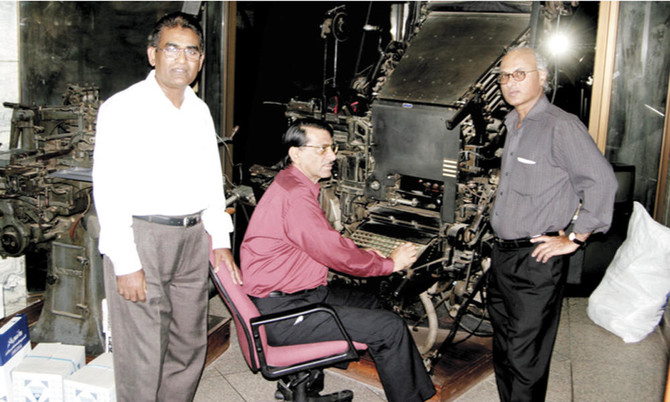
French creatives bring enchanting art experience to Jeddah
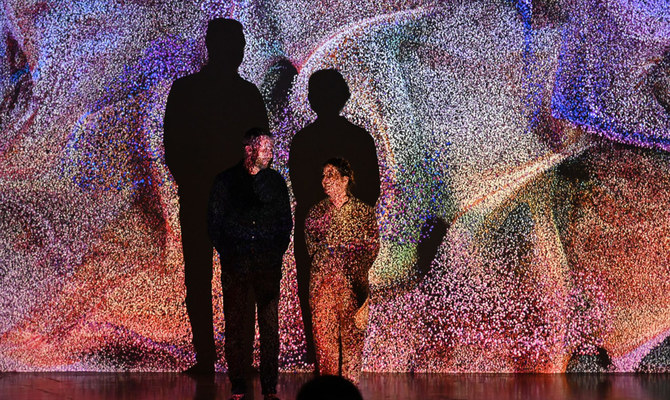
- For ‘ETH3R,’ Paul Marlier translates dancer Jeanne Morel’s graceful movements into digital art
JEDDAH: Artist Paul Marlier and dancer Jeanne Morel have brought an interactive digital art display dubbed “ETH3R” to Jeddah’s cultural hub, Hayy Jameel.
The French creatives feature immersive artworks generated using the biometric data of Morel captured during her movement in extreme environments — including in zero-gravity.
The unique blend of technology and creativity has captivated audiences with its perspectives on reality, and contrasts with the often mundane nature of daily life.
In an interview with Arab News, Marlier spoke about the creative process behind their digital artwork. He also highlighted the production of artworks inspired by the human and scientific data he had gathered.
“It is a real pleasure to be here, particularly in Hayy Jameel, where we blend art and science to create a sensory experience like no other,” he said. “It represents the DNA imprint of the world — the dance of our souls.”

He added: “ETH3R encompasses paintings and dynamic installations derived from the biometric data of my wife, Jeanne Morel, who dances in diverse and extreme environments, from beneath the ocean depths to high-altitude astronaut training.”
Marlier has amalgamated this scientific data regarding human physiology with other information, including air quality, satellite imagery, and even facts from the Red Sea. “These artworks serve as emotional imprints, reminiscent of moments of grace. It’s truly a collaborative effort.”
Explaining the process, he added: “With Jeanne as the catalyst, adorned with sensors akin to a paintbrush, her dance emotions are translated through code into the digital art seen in the paintings. We explore themes of fragility, spirituality, and the inherent unity between humans and nature — the universal dance.”
“We approach data not as mere codification, but as sensations, enabling us to specify and share the experience. By capturing a wealth of information from this singular dancer, we endeavor to materialize the essence of grace,” Marlier said.
Morel added: “Dance is the way to express your deepest emotions, sometimes simpler than words.”
“Dance is the allegory of life. It allows me to stay alive, connected to the movements of the world. Our bodies are constantly dancing, moving, on this earth which itself dances around the sun and remains in balance thanks to gravity,” she added.
Of their first visit to the Kingdom, Marlier said: “The people are absolutely welcoming here. And spirituality and poetry are so present.”
Morel added: “We admire the spirituality and also the open-mindedness of this country regarding art and especially digital art.”
Waleed Harthi, an art enthusiast, said: “Witnessing art that exceeds boundaries was a mesmerizing journey, captivating our senses and sparking wonder at the fusion of art and technology. The live demonstration and dance were incredibly relaxing and offered a serene escape to some other imaginary world.”
The exhibition runs until May 11.
Saudi FM discusses developments in Sudan with army chief, RSF leader

- During the separate calls, the latest developments in the situation in Sudan and their repercussions on the Sudanese people were discussed
RIYADH: Saudi Arabia’s Foreign Minister Prince Faisal bin Farhan spoke with Sudan’s Sovereign Council Chief General Abdel Fattah Al-Burhan and the leader of Sudanese paramilitary Rapid Support Forces Mohamed Hamdan Dagalo on Wednesday.
During the separate calls, the latest developments in the situation in Sudan and their repercussions on the Sudanese people were discussed, Saudi Press Agency reported.
Prince Faisal stressed the importance of working to protect Sudan and its people from further destruction and preventing the worsening of the humanitarian conditions there.
The minister also said it was important to prioritise the interests of the Sudanese people and stop the fighting to protect state institutions and bring about safety in Sudan.
Farasan Island celebrates 20th Hareed Fishing Festival

- Event showcases tourist activities such as parasailing, traditional folk dances
RIYADH: Fishermen from the Jazan region have started preparing for the 20th Hareed Fishing Festival, which begins on Thursday.
The festival, which takes place on Farasan Island and lasts for two days, celebrates the fishing of parrotfish, otherwise known as hareed.
It showcases various tourist activities such as parasailing, traditional folk dances, and competitions for catching the fish, which is difficult due to their survival instinct which leads them to hide by corals.
Hareed are traditionally caught close to the shore in nets. The brightly colored fish come in different sizes and change color as they grow, the color varying according to their sex. They are considered parrot-like as they have teeth that they use to scrape food off coral reefs.
The fishing season varies across the region’s waters. In the past, the people of Farasan celebrated the event by visiting newlywed brides wearing traditional dress, while women and children joined in the festivities at her home.
Visitors to the festival will also get the chance to explore the heritage sites in Farasan, which include Wadi Matar, Al-Qassar village and Bait Al-Jarmal, along with several historic houses.
The island boasts a unique cultural heritage which centers on sailing and pearl-diving experiences in the past.
Jazan Gov. Prince Mohammed bin Nasser is launching the festival, which is organized by the region’s branch of the Ministry of Environment, Water and Agriculture, in partnership with the islands’ governorate.
Mohammed Al-Atif, the general director of the branch, said that the festival embodied the customs and traditions of the people of the Farasan Islands and was considered an annual event to highlight the region’s tourism potential.
He added that the festival also celebrates hareed, which appears at the same time each year and proves a major attraction for people in the Jazan region.
Riyadh hosts food technology and innovation show
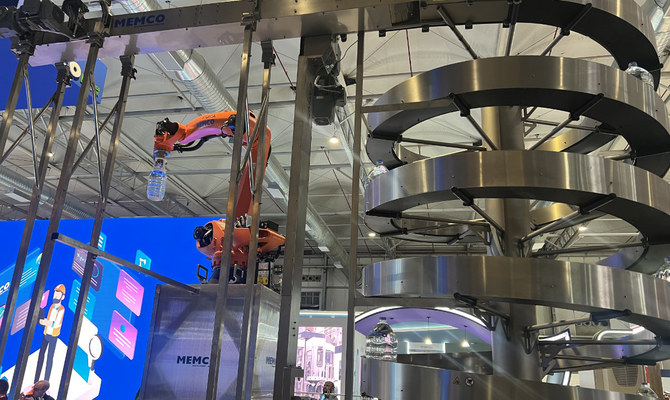
- Industry giants showcase latest in processing, sustainability
RIYADH: More than 400 companies from 35 countries are taking part in the first Saudi Food Manufacturing show, which opened in Riyadh on Tuesday.
Held under the patronage of Saudi Minister of Industry and Mineral Resources Bandar Al-Khorayef, the event focuses on processing, packaging and ingredients and aims to facilitate high level business deals, connections and collaborations.
Three companies that won a Saudi Food Manufacturing Award at the event — Multivac, DC Norris and Brenntag — spoke to Arab News.
Amir Sotoudeh, managing director of Multivac, said the German firm won the Best Processing Innovation Award for its TX series and smart services at Gulfood Manufacturing.
The company has had a branch office in Riyadh since 2009 and the Kingdom is the company’s largest market in the Middle East.
“Saudi Arabia is a significant market, especially in recent years, with major developments focusing on local production and manufacturing. That’s where our technology and expertise as a market leader in processing and packaging are essential.”
DC Norris is a UK-based process equipment company serving 62 countries. It provides solutions for food, dairy and beverage manufacturing and won the Best Processing Manufacturing Award.
Stuart Rigby, product and process technology manager at DC Norris, said the company’s jet cook system, which is used in Saudi Arabia, Qatar, Dubai and Azerbaijan, was able to cook meals two to three times faster than traditional methods.
“It also uses considerably less water, resulting in zero burns, requiring less cleaning and reducing costs. Additionally, it consumes up to 55 percent less energy than traditional cooking methods,” he said.
Brenntag, a 150-year-old German company, is the global market leader in chemical and ingredient distribution. It won the Best Ingredients Innovation Award.
Mahaboob Shaik, technical sales manager at Brenntag, said: “We have replicated the characteristics of regular milk-based proteins and constituents using plant-based alternatives. We’ve developed a Greek-style feta cheese made from plant-based ingredients.
“This helps to reduce allergens like milk proteins in dishes like Caesar salad. Now, when you order a salad at a restaurant, you can enjoy a plant-based cheese, which is entirely vegan.”
Several Saudi manufacturers, including Sapin, Anasia and Memco, are taking part in the show, which provides a platform for companies to exchange ideas.
Majed Al-Argoubi, CEO of the Saudi Authority for Industrial Cities and Technology Zones, said: “The industrial sector is going to increase both the GDP and abilities of youth in the Kingdom.
“We are making impressive growth through Saudi Vision 2030 and Made in Saudi is remarkable for expanding cities across the country and achieving our goals.”
Among the most innovative products on display are the Novamyl BestBite from Novozymes, which improves texture and softness in baked goods while extending shelf life to reduce food waste. Others include sustainable packaging for dates from Napco, a sugar reduction method for fruit juice from Austria Juice, Lactosan, a natural culinary booster from FSL and Biopap, a range of renewable, compostable, high-performance food containers.
Pavilions from Italy, Germany, the Netherlands, US, France, Turkiye and China reflect the international scope of the show, which runs until Thursday.
Saudi Arabia expresses condolences after dam bursts in flood-hit Kenya
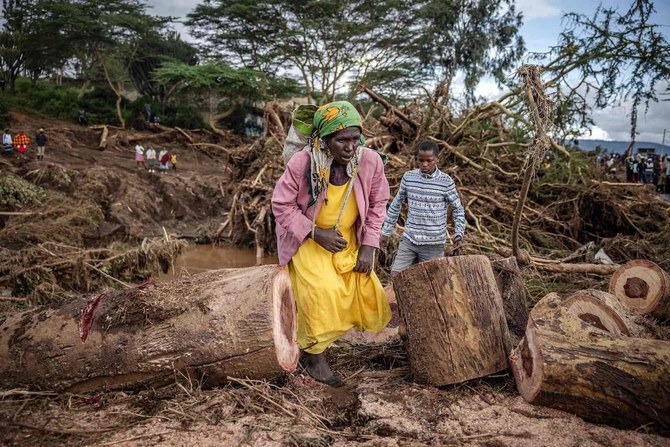
- Floods and landslides across Kenya have killed 181 people since March, with hundreds of thousands forced to leave their homes
- The ministry said the Kingdom stands with the government and people of Kenya during this painful time
RIYADH: The Saudi Foreign Ministry expressed on Wednesday the Kingdom’s condolences to the families of those who died after a makeshift dam burst its banks in Kenya’s Rift Valley on Monday.
At least 48 people including children died as a result of the incident.
Residents said the accident occurred in the dead of night when the dam burst near the town of Mai Mahiu in Nakuru county, sending torrents of water and mud gushing down a hill and engulfing everything in its path.
The ministry said the Kingdom stands with the government and people of Kenya during this painful time.
Torrential rains and floods continue to batter the country and 181 people have been killed since March, with hundreds of thousands forced to leave their homes.





